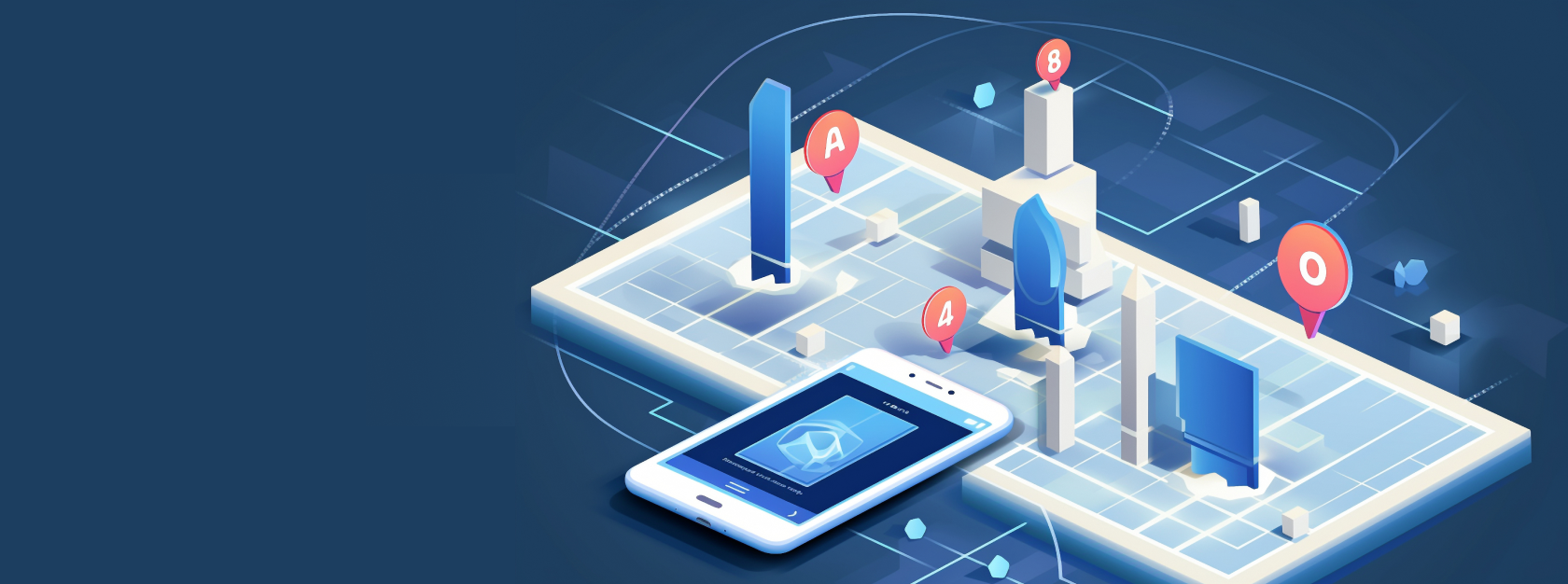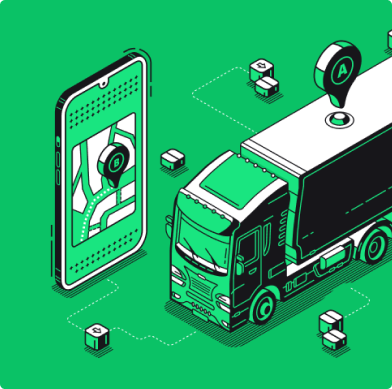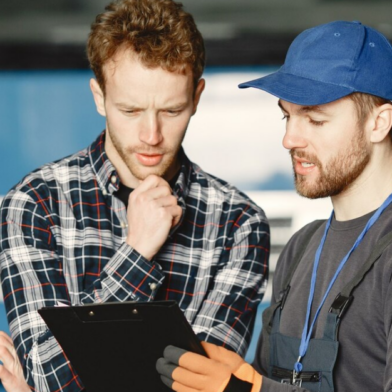Geofencing technology has become increasingly popular, allowing businesses and organizations to target specific audiences based on their specific location. Geofencing use cases extend beyond marketing and advertising, with applications in sectors such as logistics, security, agriculture, and so much more.
With the global geofencing market size projected to skyrocket from US$ 1867.2 Mn in 2022 to US$ 9596.6 Mn in 2032, the impact of this technology is set to be enormous.
Source: Future Market Insights
From retail to real estate, geofencing transforms how companies interact with their customers. It can be a valuable resource for your business to boost brand success by delivering targeted push notifications to engage with its target audience effectively.
At Volpis, we are committed to creating customized fleet management software solutions that integrate the latest trends and standards to help our clients stay ahead of the curve. Our team has developed over 100 web and mobile applications worldwide, each tailored to meet the unique needs of our clients. And in this article, we want to share what we learned along the way.
In this guide, we’ll explore the top use cases of this geofencing technology. You’ll see a diverse range of geofencing examples covering various industries, learn how geofencing works, and how to implement geofencing for your business.
So, grab your coffee, and let’s dive in!
What is geofencing technology & how does a geofence work: where the real world meets virtual boundaries
Geofencing is a technology that allows developers to set up virtual boundaries or perimeters around a specific geographic location. When a mobile device enters or exits these virtual boundaries, the app can trigger actions or push notifications.
Geofencing relies on a combination of technologies, such as GPS, Wi-Fi, cellular networks, and Bluetooth, to determine the device’s location and track its movements.
Geofencing has various use cases across different industries. It enables businesses to deliver personalized and timely offers to customers based on their location, increasing engagement and driving conversions. By leveraging this powerful technology, you can unlock new opportunities to enhance customer experiences, streamline processes, and boost your bottom line.
Top 12 geofencing use cases: geofencing applications for business
What is geofencing used for? Many companies implement geofencing to enhance their marketing efforts and engage with customers. The list below provides a comprehensive look at various geofencing examples across different industries.
1) Logistics and fleet management
Geofencing can be applied to track and monitor the movement of vehicles, optimize routes, and enhance overall efficiency in fleet management.
Geofencing examples: Asset tracking and geofencing software can be used to set up restricted zones and receive alerts if a vehicle enters or leaves these areas, minimizing safety risks.
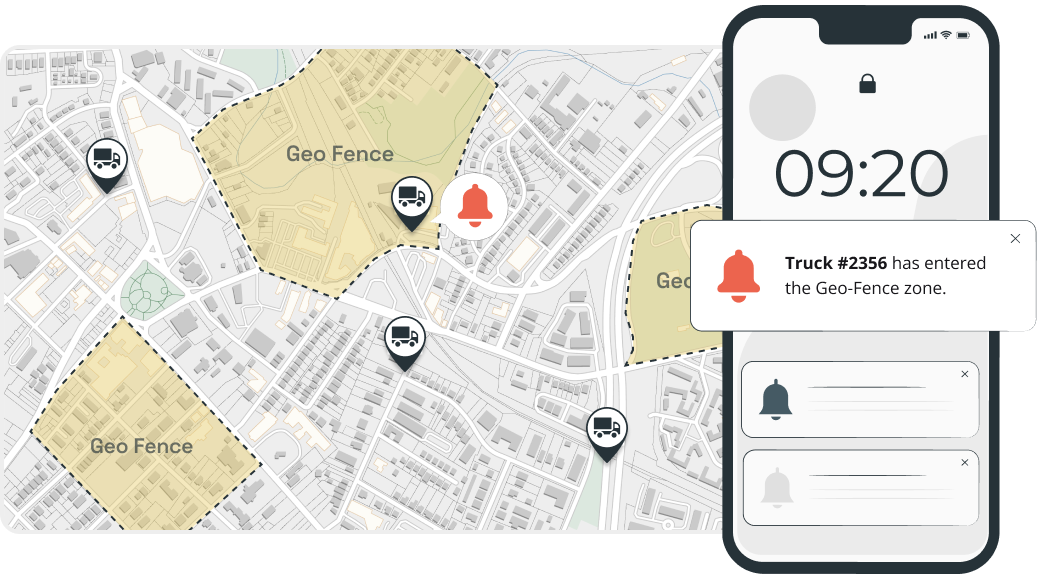
2) Marketing and geofenced ads
Location-based marketing (or geofencing marketing) is one of the most significant advantages of this technology. Businesses can target nearby app users and increase foot traffic to their stores, making it an excellent way to engage users and attract more customers.
Geofencing examples: Geofencing can be used to target customers with relevant ads or offers based on their location. For example, with a geofencing marketing campaign, a company can send promotional messages or offers to customers when they are near a specific location or event, such as a sports game or concert.
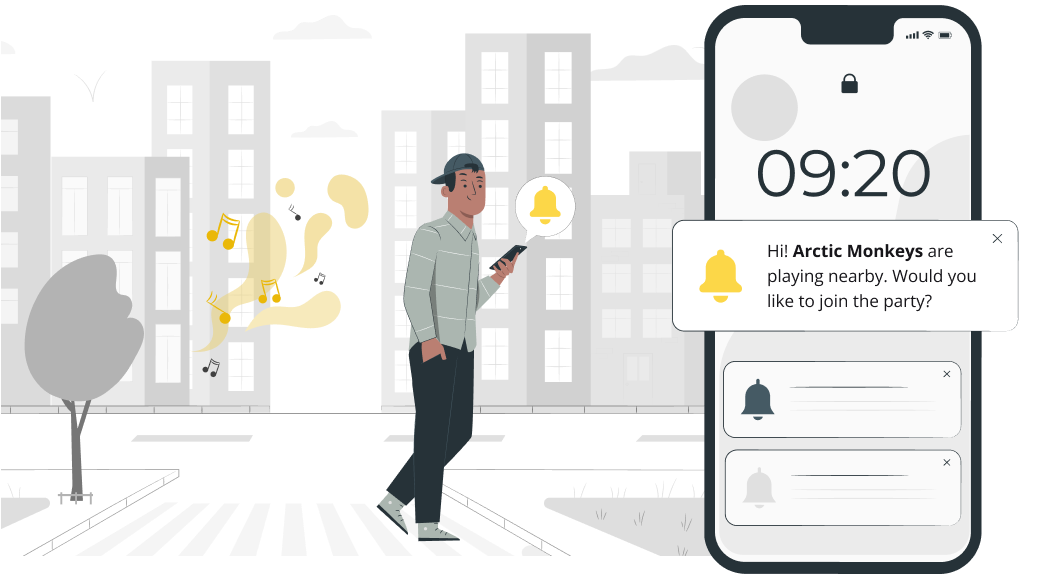
3) Retail
By setting up virtual boundaries around their store or specific products, retailers can trigger push notifications to customers. It’s crucial for businesses to target the right location to maximize the time spent by potential customers. Restaurants can send limited-time offers to potential customers within a defined area, such as happy hour special.
Geofencing examples: It can be used to trigger targeted promotions to customers as they enter or exit a store or a specific department within a store. For example, a retail store may use geofencing to send a promotion for a specific product as a customer enters a particular department or to offer a discount code as they leave the store.
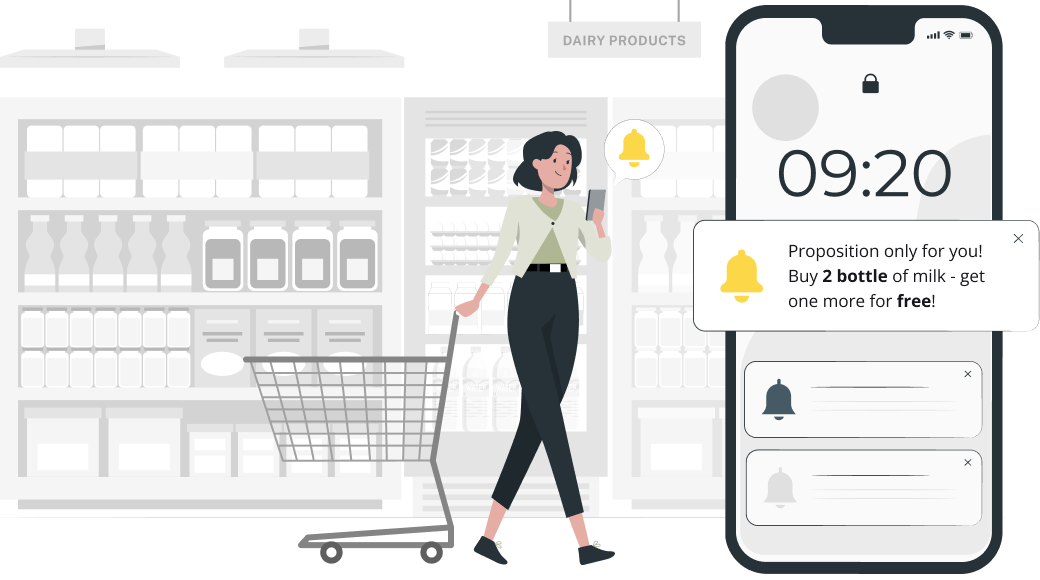
4) Events and conferences
Organizers can use geofencing technology to enhance attendee experiences, provide relevant information, and monitor attendance.
Geofencing examples: Event organizers can send attendees personalized welcome messages, schedule updates, and venue maps upon their arrival at the event location, increasing user engagement.
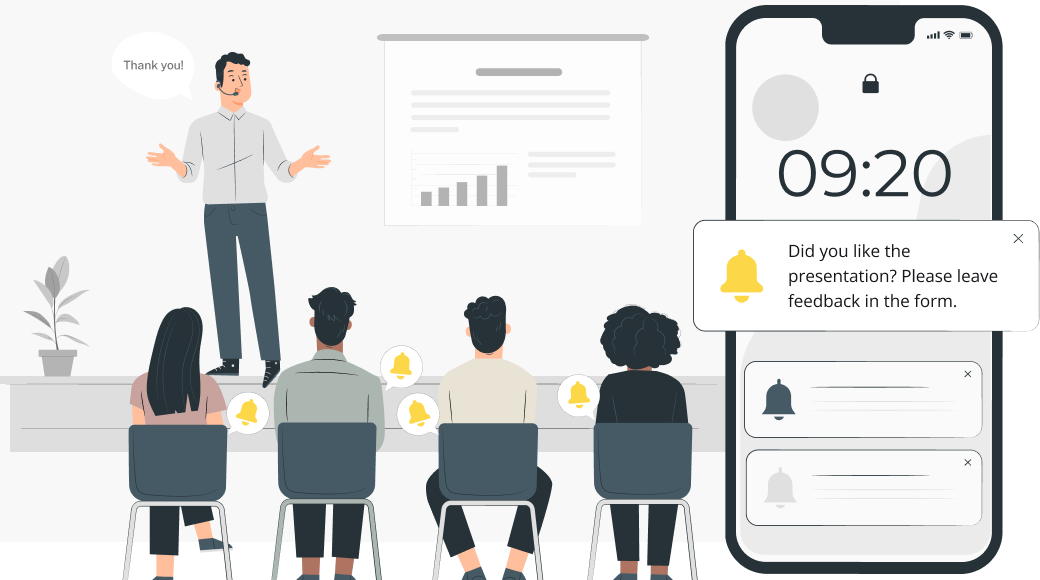
5) Healthcare geofencing
Geofencing can be used to monitor the movement of patients, staff, and equipment within healthcare facilities to improve patient outcomes and safety.
Geofencing examples: Hospitals can use geofence set around specific wards or units to monitor the movement of high-risk patients, ensuring their safety and preventing unauthorized access.
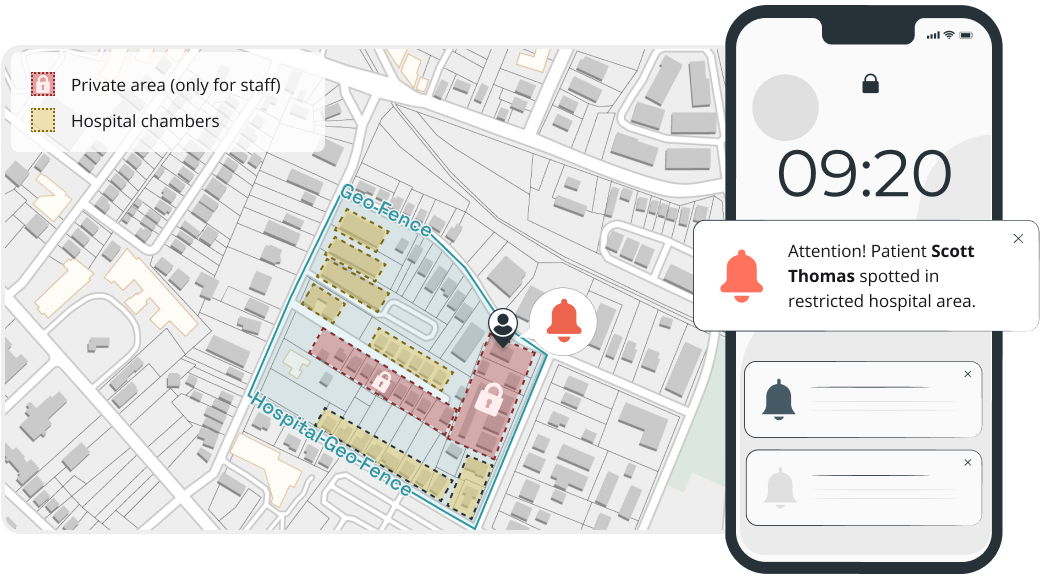
6) Agriculture
Geofencing technology can be used in precision agriculture to optimize the use of resources and increase crop yields.
Geofencing examples: Farmers can set up geofences around different sections of their fields. By integrating geofencing with Variable Rate Irrigation (VRI) systems, farmers can automatically adjust the amount of water applied to each section, ensuring efficient water usage and promoting optimal crop growth.
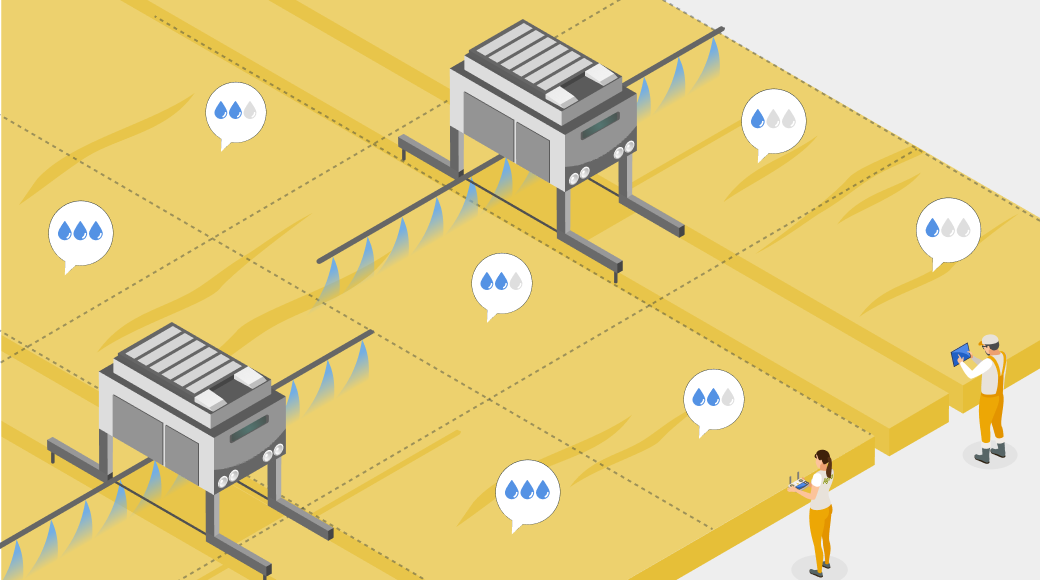
7) Livestock farm management
Farmers can use geofencing to monitor the location and movement of their livestock, ensuring their safety and well-being nearby.
Geofencing examples: You can set up geofences around grazing areas to inform farmers when animals wander too far or enter potentially dangerous zones.
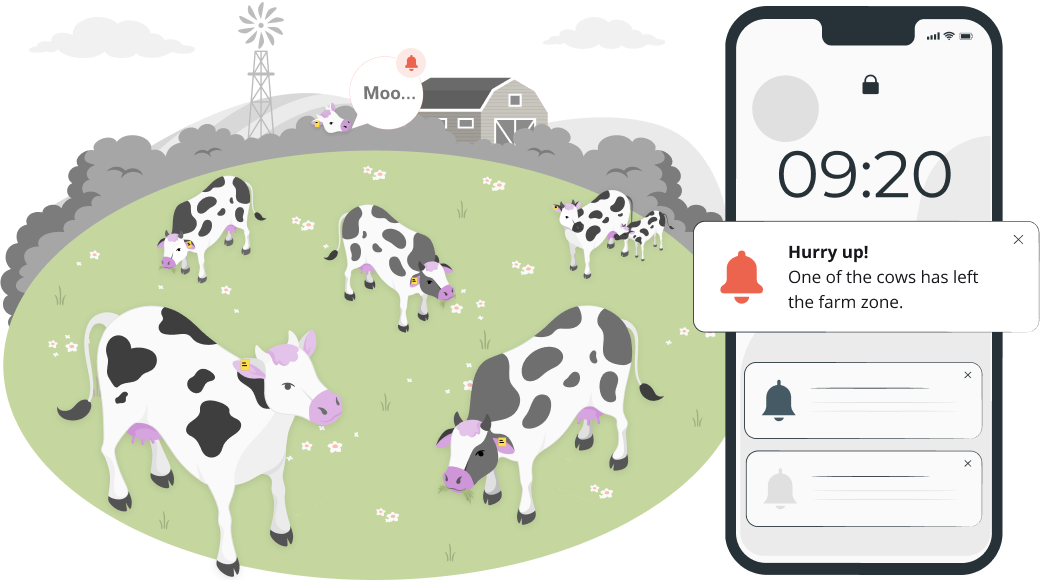
8) Security and access control
Organizations can use geofencing to enhance security measures and limit access to restricted areas.
Geofencing examples: A company can set up geofences around its facilities to automatically disable employee access cards or send security alerts when an unauthorized individual enters the restricted area.
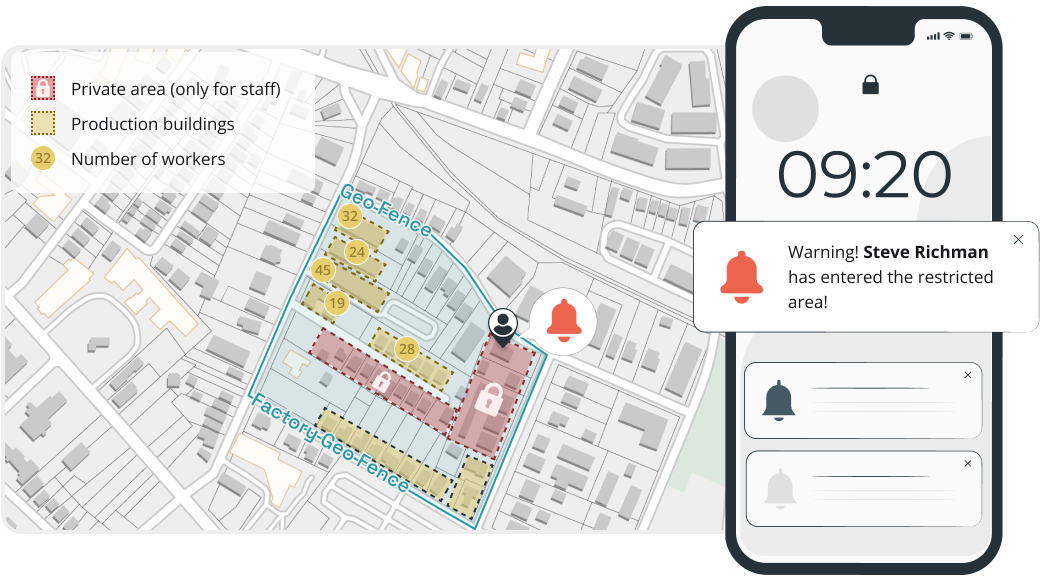
9) Employee monitoring and time tracking
Companies can use geofencing to monitor employee attendance, location, and working hours, enhancing accountability.
Geofencing examples: Employers can set up geofences around their worksites to automatically clock employees in and out, ensuring accurate timekeeping.
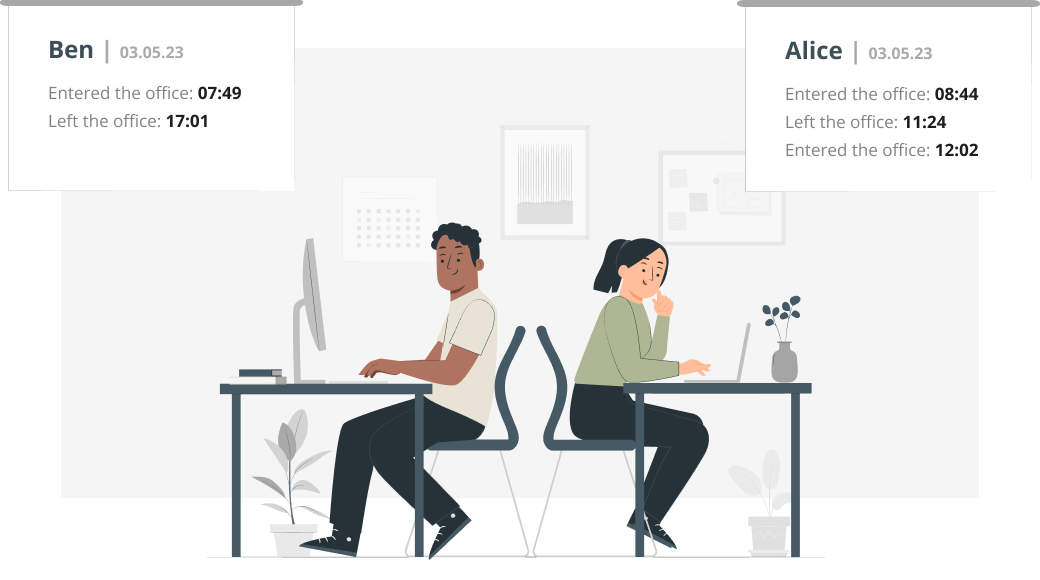
10) Real estate geofencing
Geofencing can be used to provide prospective homebuyers with helpful information about properties within their area of interest.
Geofencing examples: Real estate agents can set up geofences around listed properties to send potential buyers push notifications with property details, images, and virtual tours, making it an excellent way to attract local customers. Implementing real estate geofencing is an effective way for businesses to deliver personalized and timely messages to customers, encouraging them to take action.
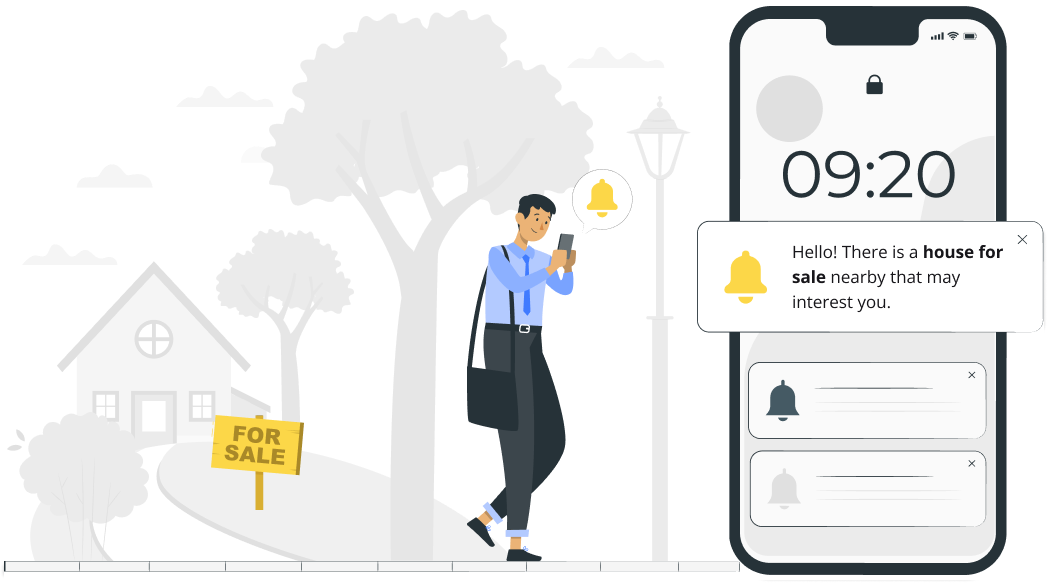
11) Tourism
Geofencing can enhance travelers’ experience by providing relevant information and offers based on their location.
Geofencing examples: Travel agencies can set up geofences around popular tourist attractions, sending visitors rich notifications with facts, historical context, and nearby recommendations for dining and shopping, making it an excellent way to target users.
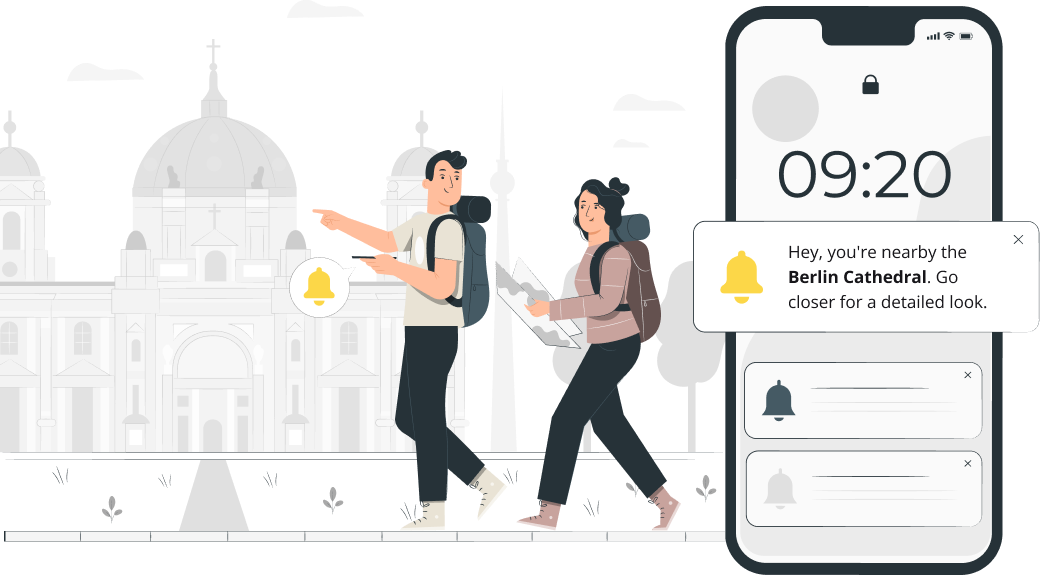
12) Public safety and emergency management
Geofencing can be employed to improve emergency response and public safety by providing real-time information.
Geofencing examples: Emergency management agencies can use geofencing to send location-based alerts during natural disasters or other crises, providing evacuation instructions, shelter locations, and safety updates.
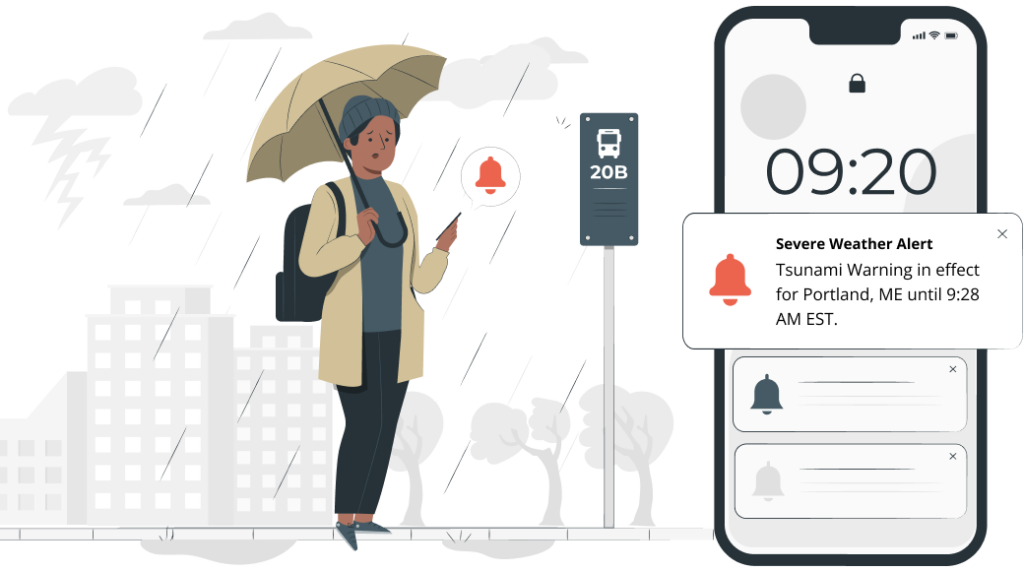
How to implement geofencing for your business: step-by-step guide
Implementing geofencing can be a powerful way to engage with interested customers and optimize your operations. But how to ensure that your geofencing campaign is set up properly and delivering results?
Step 1: Define your objectives
The first step in implementing geofencing is to define your objectives. What do you hope to achieve with this technology? Are you looking to drive foot traffic to your store, improve customer engagement, or optimize your fleet management? Identifying your ultimate goal will help you determine how to use it effectively.
Step 2: Create your geofencing boundaries
Next, you’ll need to create your geofencing boundaries. These boundaries can be customized to fit your needs, such as setting up virtual boundaries around your store or any other area.
Step 3: Set up your notification triggers
Once you’ve defined your boundaries, you’ll need to set up your notification triggers. These triggers determine when a notification or alert is sent to the user. For example, you may want to send a discount offer to a customer who enters a certain radius around your store.
Step 4: Test and refine
Before launching your geofencing campaign, it’s important to test and refine your settings. Test your boundaries and notification triggers to ensure they are working properly. Refine your settings based on feedback and data to improve the effectiveness of your campaigns.
Step 5: Launch and monitor
Once you’ve tested and refined your settings, it’s time to launch your campaign. Monitor your campaign’s performance and make adjustments as needed. Pay attention to metrics such as open rates, click-through rates, and conversion rates to determine the effectiveness of your strategy.
And for an in-depth guide to the fleet management software development process, you can check out our comprehensive resource that covers every step from concept to deployment. It will provide you with a detailed roadmap to successfully create and implement fleet management solutions tailored to your business needs.
Enhanced security with geofencing: a real-world success story from our client

In today’s fast-paced world, ensuring the security and safety of one’s home is a top priority for many homeowners. To address this need, our team at Volpis partnered with Garadget to implement an innovative geofencing feature designed to alert users when they leave their property with the garage door open.
Background: Garadget is a smart home solution provider focused on improving the security and convenience of homeowners. The company sought to add an innovative feature to its offerings, which would notify users when they move 500 meters away from their homes, and their gates were still open.
Solution: Our team collaborated closely with Garadget to develop and implement a geofencing system tailored to their specific requirements. We created a virtual perimeter of 500 meters around the user’s home, and when the user moved beyond this boundary with the garage door still open, they would receive a notification on their smartphone.
Results: The feature we implemented for Garadget has been met with overwhelmingly positive feedback from users. Homeowners reported increased peace of mind, as they no longer had to worry about accidentally leaving their gates open when leaving their homes. The project reinforced Garadget’s reputation as an innovative smart home solution provider, offering unique and practical features to its customers.
Geofencing app development by Volpis: empower your business with geofencing technology
Regularly ranked among the Top Custom Software Development Companies on Clutch.co, Volpis has been leveraging the power of technology to assist business owners in reaching unparalleled milestones. Whether you’re looking to build a comprehensive software system from scratch or incorporate new features into an existing platform, Volpis is here to assist.
If you have any questions about geofencing and its implementation, you can schedule a free, no-commitment consultation with our experienced development experts.
FAQ
Companies should consider their goals, accuracy and precision needs, privacy and security requirements, and cost versus expected ROI when deciding to implement geofencing solutions. Additionally, they should ensure seamless integration with existing systems and minimize user disruption to ensure successful implementation and achieve desired outcomes.
Yes, it can be used for both indoor and outdoor apps. Outdoor geofencing relies on GPS and other satellite-based location technologies, while indoor geofencing uses technologies such as Wi-Fi, Bluetooth, and RFID.
Collecting and processing location data is subject to numerous privacy laws and regulations. Businesses must implement appropriate security measures to protect the sensitive data collected by geofencing systems and avoid data breaches or misuse.
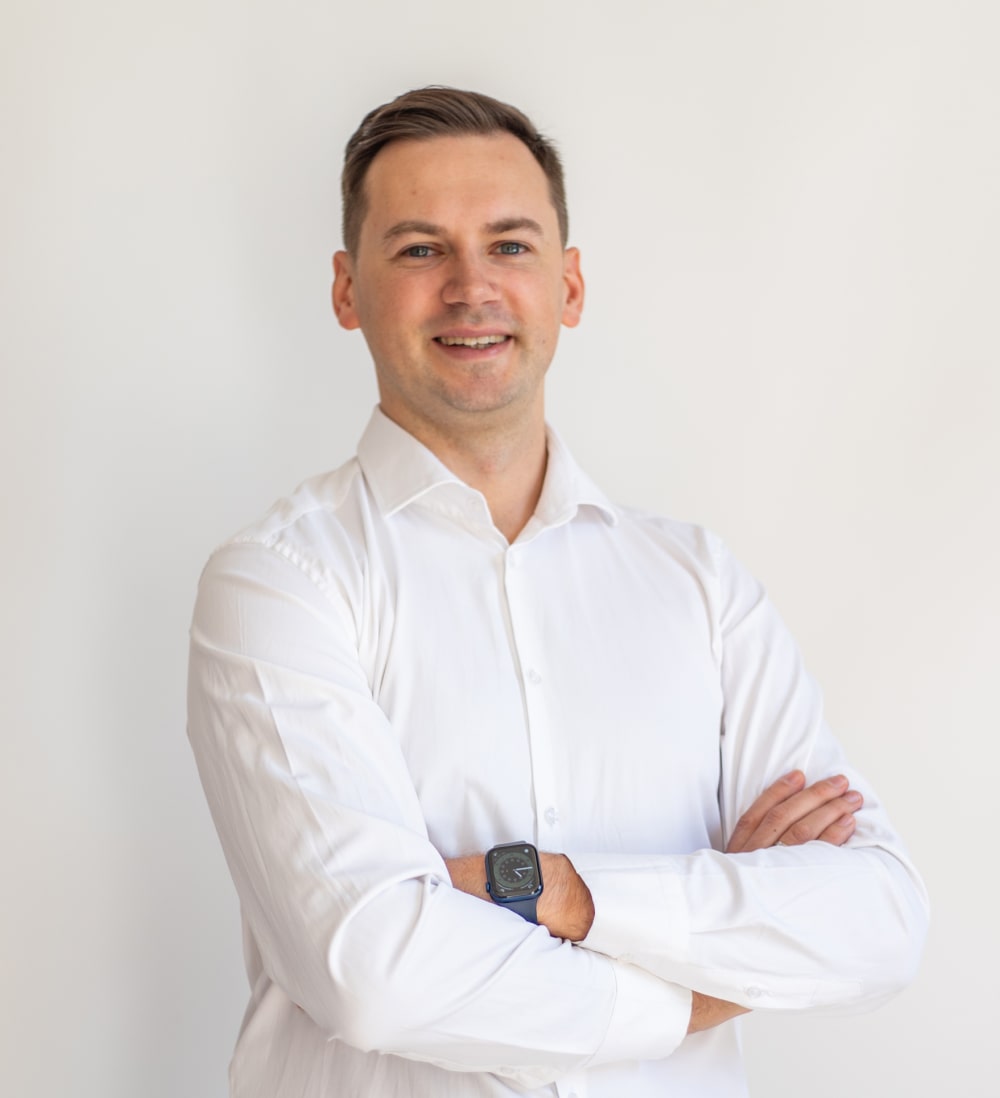
Kostya Khuta, the CEO of Volpis, is an expert in crafting custom software solutions for the Fleet Management, Logistics, and Transportation industry. With over 8 years of experience, he leads the way in delivering innovative and tailored solutions to meet industry-specific needs.
